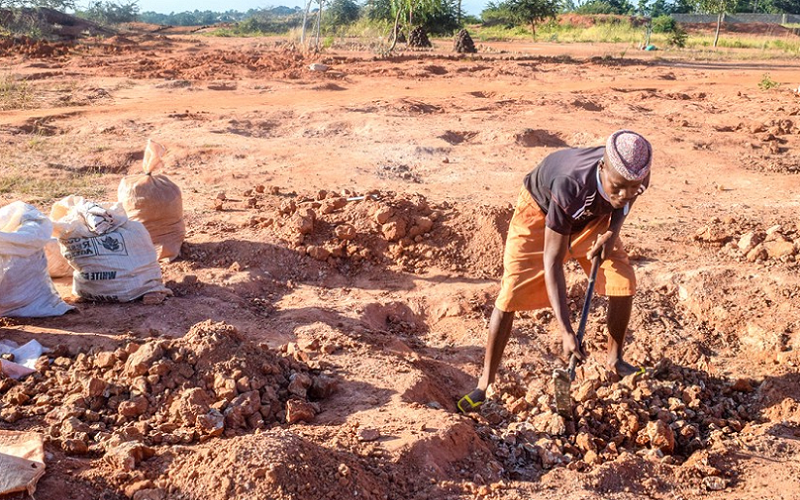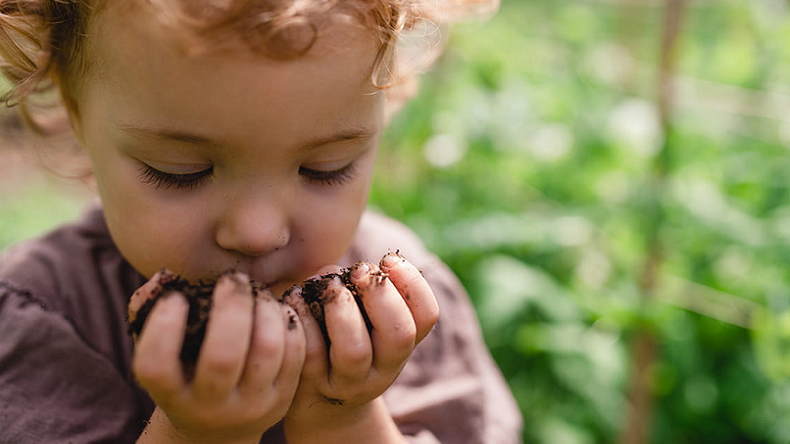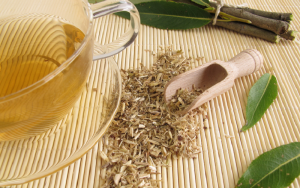
In the realm of unique and often unexplored culinary practices, one tradition stands out: Geophagy, or the consumption of earth and clay. At first glance, this age-old practice may evoke reactions of surprise or even disbelief. Yet, geophagy spans cultures, continents, and even species, forming an intriguing part of the global gastronomic landscape. From the nutrient-rich soils consumed by pregnant women in certain African cultures to the detoxifying clay ingested by parrots in the Amazon, geophagy has shaped the behaviors, health, and survival strategies of diverse life forms.
Contents
Introduction to Geophagy
In the intricate tapestry of human behaviors and traditions, one practice stands out as both universally intriguing and widely misunderstood: Geophagy, the consumption of earth and clay. This phenomenon, deeply rooted in various cultures and even spanning different species, often leaves modern observers puzzled. But for those who partake, the reasons can be as complex and layered as the Earth itself.
Definition of Geophagy
Geophagy comes from the Greek words “geo,” meaning “earth,” and “phagein,” meaning “to eat.” Put simply, it refers to the deliberate consumption of earth, soil, or clay. It’s a practice seen in various forms across the globe, and its history dates back to prehistoric times.
Brief History and Global Incidences of Geophagy
The origins of geophagy are difficult to pinpoint, as they likely predate recorded history. Clay tablets inscribed by ancient civilizations mention the consumption of earth for medicinal purposes. Aristotle, the famed Greek philosopher, noted that pregnant women in Greek society had cravings for earth. Likewise, Pliny the Elder, a Roman author, and natural philosopher, documented the use of clay for healing wounds and treating internal diseases.
Throughout the centuries, geophagy has been practiced on every continent. It is particularly prevalent in certain parts of Africa, Asia, and the Americas, where it is often associated with traditional medicine, spiritual practices, and nutritional needs. Despite its long history, geophagy remains a fascinating yet understudied area of human behavior and biology. It is a practice that continues to perplex, inspire, and inform us about our intricate and profound connection with the very earth beneath our feet.

Origins of Geophagy
The origins of geophagy are as diverse as the cultures that practice it. This widespread phenomenon traces back to our earliest human ancestors and is woven into the folklore and traditions of many societies.
Cultural Practices and Traditions
Geophagy has been a part of human practices for thousands of years and has found its place within the culture and traditions of many societies worldwide. The reasons behind these practices vary. Some societies view the consumption of earth or clay as a spiritual act, a way to connect with ancestral spirits or the divine. Others use it as a form of medicine, believing that the earth can cure ailments, or as a supplement, providing minerals and nutrients not easily accessible in their regular diet.
In many societies, the practice of geophagy is often linked with specific life stages or conditions. For instance, pregnant women are known to consume earth in several cultures, possibly due to mineral deficiencies or to relieve nausea. Geophagy is also practiced during certain rituals or ceremonies, further underscoring its cultural significance [1].
The Role of Geophagy in Historical Medicinal Practices
From ancient times, people have turned to the earth in search of remedies for various ailments. Clay and earth were believed to have healing properties, and their consumption was seen as a way to treat different health conditions.
Ancient Greek and Roman physicians documented the use of clay and earth for medicinal purposes. They used it as an antidote for poison, a remedy for dysentery, and a treatment for wounds. This belief in the healing properties of earth found its way into Ayurvedic medicine in India, traditional Chinese medicine, and the indigenous medicinal practices of many cultures worldwide [2].
Moreover, the antibacterial properties of certain types of clay have been recognized and used to prevent food spoilage. This historical usage suggests a deep-rooted understanding of the potential health benefits of geophagy. It’s an understanding that modern science is only beginning to fully appreciate and explore.

Scientific Explanation behind Geophagy
Geophagy, from a scientific perspective, is more than just an intriguing cultural practice — it’s a complex interplay between biology, geology, and nutrition.
Composition of Earth and Clay
Soil and clay are not just mere “dirt.” They are intricate mixtures teeming with minerals, organic matter, microorganisms, and other components. The exact composition can vary greatly depending on the location and soil type. However, certain elements are commonly found in most soils, including iron, calcium, magnesium, potassium, and other trace minerals.
Clay, in particular, has a unique chemical structure that allows it to bind to other molecules. It’s this binding property that is believed to give clay its potential detoxifying and medicinal effects.
Potential Nutritional Benefits
Geophagy can serve as a potential source of essential minerals, especially in regions where dietary intake of these minerals might be insufficient. This is particularly true in parts of the world where food sources are limited, or the diet is heavily based on plant foods that can be low in bioavailable nutrients.
Consuming certain types of soil or clay could help supplement the intake of vital nutrients like iron, calcium, and zinc. For instance, the reddish soils often consumed in parts of Africa are rich in iron oxides, potentially providing a much-needed source of this essential mineral [3].
Detoxifying Properties
Apart from supplementing mineral intake, geophagy can also provide a detoxifying effect. This effect is due to the unique structure of clay particles, which enables them to bind with various substances, including toxins. When ingested, these clay particles can bind with harmful substances in the gastrointestinal tract, reducing their absorption and facilitating their removal from the body.
For example, clay’s ability to bind with aflatoxins, harmful compounds produced by certain molds, can reduce the risk of these toxins entering the bloodstream. Similarly, clay can bind with heavy metals and other environmental toxins, potentially limiting their harmful effects. While the detoxifying aspect of geophagy is intriguing, more research is needed to fully understand the mechanisms and health implications involved [4].

Prevalence and Practice of Geophagy Across Different Cultures
Geophagy is a truly global phenomenon, stretching from the far corners of Africa to the expansive landscapes of the Americas, from the ancient civilizations of Asia to the modern societies of Europe. While the practice may vary, the common thread of consuming earth and clay weaves a fascinating narrative across these diverse cultures.
Geophagy in Africa: Traditions and Beliefs
In many parts of Africa, geophagy is a common practice with deep cultural and traditional roots. It is often associated with pregnant women who consume certain types of clay or soil, which are believed to help with nausea and provide essential minerals.
In Ghana and Nigeria, for example, clay is sold in markets, often in neatly shaped pellets or discs. In parts of Kenya, certain types of clay are baked and mixed with herbs to create a medicinal preparation for pregnant women. These practices reflect not only the nutritional aspects of geophagy but also its important role in cultural traditions and beliefs.
Geophagy in the Americas: Historical and Present Practices
Geophagy has a long history in the Americas, particularly among Indigenous communities. Native American tribes have been known to consume clay mixed with water as a traditional remedy for various ailments.
In the southern United States, geophagy was noted during the 19th and early 20th centuries, especially among the African-American population. It has been suggested that this practice could have been brought over during the Transatlantic Slave Trade, a tragic testimony to cultural practices retained under duress. Today, ‘white dirt’—a type of clay—is still sold in some Southern states and used in cooking or consumed directly.
Geophagy in Asia: Unique Rituals and Customs
Geophagy is practiced in various parts of Asia as well. In India, certain types of clay are consumed for their perceived health benefits, often in combination with traditional Ayurvedic medicine. Clay tablets known as “multani mitti” have been used for centuries for skin care, but some people also ingest them for digestive health.
In Japan, a form of geophagy known as “tsuchi-gui” was practiced among mountainous communities. Clay was consumed to prevent food poisoning and as a source of minerals. Although this practice has mostly disappeared, the consumption of certain clays for health purposes is still seen in some regions.
Geophagy in Europe: From Ancient Times to Modern Day
Geophagy in Europe can be traced back to ancient times. Greek and Roman texts contain references to the consumption of earth for health purposes. However, the practice has mostly declined in recent centuries, with few modern instances of geophagy reported.
Despite this, clay is still used in various ways in European cultures. It’s a popular ingredient in natural cosmetics, and certain types of healing clay are sold in health food stores for both external and internal use. This suggests that, while geophagy as a dietary practice might be rare in modern Europe, the use of clay for health purposes remains a part of the cultural fabric.
Health Implications of Geophagy
While the cultural aspects of geophagy are fascinating, the health implications of this practice are equally significant. Consuming earth or clay can have both positive and negative effects on health, highlighting the complex relationship between geophagy and human biology.
Potential Benefits and Nutritional Aspects
As we have already touched upon, one of the most direct benefits of geophagy could be nutritional supplementation. Earth and clay can provide important minerals, including calcium, iron, and zinc. This is especially relevant in regions where regular diets may be deficient in these nutrients.
The detoxifying effects of clay could also prove beneficial by binding with toxins in the gastrointestinal tract and reducing their absorption. The clay’s ability to bind with harmful aflatoxins produced by certain molds is one example of this protective mechanism [5].
The ingestion of clay might have a positive effect on gastrointestinal health. It has been suggested that clay can coat the lining of the stomach and intestines, reducing irritation and inflammation.
Potential Risks and Adverse Health Effects
Despite potential benefits, geophagy is not without risks. One of the main concerns is the ingestion of harmful substances along with the earth or clay. Depending on the source of the material, this could include various contaminants, such as heavy metals or harmful bacteria.
Excessive consumption of earth can also interfere with the absorption of nutrients. While clay can bind with toxins, it can also bind with nutrients, making them unavailable for absorption. This could potentially lead to nutritional deficiencies, particularly in individuals who are already at risk.
Another risk is the potential for intestinal blockages, particularly in cases of excessive or chronic earth eating. These can pose serious health risks and require immediate medical attention.
References
[1] Geophagy or Eating Dirt: A Traditional Practice Which Provides Nutrients to the Body
[2] Geophagia: the history of earth-eating
[3] Geophagia: Benefits and potential toxicity to human—A review
[4] The people who can’t stop eating dirt
[5] Geophagy practices and the content of chemical elements in the soil







